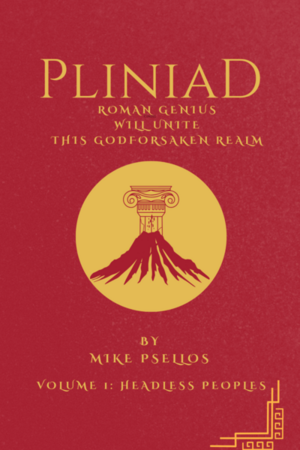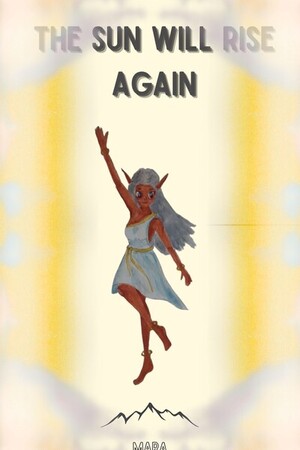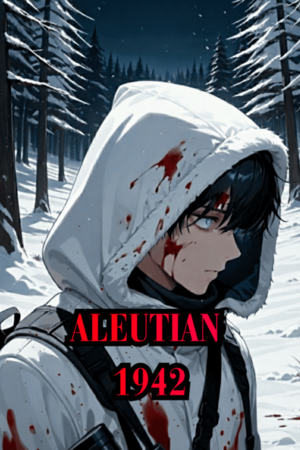Chapter 16:
Ab Venita Caput: On The Construction of The Great Ship:
Pliniad: Roman Genius Will Unite This Godforsaken Realm
Introduction
To my Father, Gaius Plinius Secundus, Princeps of The Foederati Plinii, and Co-Consul of Castra Pompania.
It may seem strange for me to submit to you, my history of our people during this tumultuous time. However, It is this terrible war that has forced my hand to pick up my pen and recount our history, and submit to you. With your approval, I will begin commissioning my assistants to send copies translated in local vulgar tongues and published outside our realm.
Many of my colleagues have looked at my project with scorn and derision, asking whether this is the most appropriate use of my time. However, I take inspiration firstly from your own example, for you found the time between your military and administrative duties to observe the natural world and record it to your dear friend and leader Vespasian. I aspire to a similar pursuit.
Secondly, as I mentioned before, the recent tragedy, of which you are no doubt aware as much as I, have changed my perspective on this project’s urgency. I now realize that if we are not successful in this conflict, then I would hope some fragment of our bravery reaches distant ears. But even if successful, I do not want any of those voices and eyewitnesses who were a part of our early days to be snuffed out before they can be part of the record.
You said once before that your own people’s earliest history was not fully chronicled until nearly 800 years afterwards. I would like to rectify this and begin now, while those who remember it still live.
Regarding the Chronology
As of now, our people still have not fully agreed upon a chronology system. As you have rightly pointed out, the “heroic year” Calendar used by the cities is so detached and disoriented, it is somehow less useful than having no sense of time at all. I have no interest in trying to reform it as your Caesar did, and happily leave that work for future generations. Some of us have been using The “Years of The Tree” (AA). I don’t think I need to tell you my opinion on that, but even with my own qualms aside this attempt to anchor ourselves to a distant past like your Ab Urbe Condita does nothing but muddy the timeline with a hazy and imprecise origin with no records in between. As such I have proposed my own AVC: Since the Coming of The Great Heads. Since you and Pompanianus kept excellent records and dating from your very arrival, your coming to this world.
The Beginning
The transition of our tribe from what began as orphans living off of what few pieces of food and sustenance they could scrounge under no leadership, to under you, the beginnings of a settled society with proper farms, proper housing, and proper traditions and families. It was here 7 months in the first year AVC we entered this new third stage of our society. Our Town became a labor camp, farms functionary, our trades purposeful, and our leisure became training. Any previous activities that we focused on, such as cooking, clothmaking, or even calvary, were reduced down to the necessary minimums unless or repurposed towards the cause of creating ships and sailors.
The initial setup was spearheaded by Regulus Plinius, whose skill in woodworking and mathematics allowed for the original machines that launched our flying scouts. Once he built his small prototype, of the construction site which I wish would have been preserved, he gave us a list of the machines needed to build the machines. For the first month no ships, instead cranes were constructed. As well as something you referred to as a dry dock was built in the middle of the camp where our old banquet hall and performance grounds were.
When this was built, we then moved on to the prototypes. Prototypes of the craft you and Regulus insisted were essential in our construction. Some such as Alexander, protested the idea of building the same project thrice, and forcing the delay window and missing your initial 90 day construction promise during his speech.
This delayed your initial promise of 90 days, 120 days, but it was necessary, you argued at the time, to ensure that all of the tribals' fears regarding the boat were assuaged once they saw that the boat could sail and that the boat could actually reach the ocean.
On the 7th month of the First Year AVC. I took the first boat with Marcus Pompanianus to the Shore. We created a makeshift dock and there the boat remained. This approach was fruitful in hindsight as it gave us crafts to practice sailing, fishing, and naval engagements with. Similarly the first prototype rotting through thanks to Barnacles on the hull taught us much in the way of ship maintenance.
Supplies and Surveys
Wood we had in plenty, given our circumstances, and according to Pompanianus the wood was of superior quality to that which he was accustomed to. Our greatest shortage was metal. Whatever iron we had, was taken from what remained of the ancient Parentes camp and cut apart and formed into suitable tools and equipment. When it seemed that all of the useful metal from that had been taken apart, we then turned to gathering pieces of the rail itself, parts of the rail from the opposite side of the island that we elected not to travel through.
After an initial survey and training voyage around the island led by Pompanianus, it was seen that the western end, with its many volcanoes, and consequent waves, was likely not a useful place to have our ship, as surveys showed that that area was regularly harassed by waves. Olivia insists that she saw traces of another camp on this battered shore, which has led to speculation that our Parentes moved so far inland from the treeless and often dangerously tumultuous area near the Drowned Spire and the Southwest shore.
As teams continued to gather the materials, the necessary skills in ironworking and tool making were developed, as well as the necessary construction techniques. This brought us to our initial stage of the camp, which was to create the space necessary to build such a boat, to build prototypes of the boat, which were usually much smaller, a quarter to half the size. What began with small-scale models, ended with a ship one quarter of the size that was then tested by several brave Owls. Of particular note was the rather rambunctious Barbara Pillonia and Pollux Pompanianus, who seems to have suffered a broken arm from the attempt. Fixes were later made, and the lads seemed to be in good spirits after the event.
Following the creation of The second and larger prototype on the 8th month of the First Year AVC, Pompanianus replaced all calvary training with Naval Training. Military duty and cavalry practice began to be replaced with sailing duty and sailing practice, as well as fishing, rope making, navigation, and other useful sailing arts, as well as fighting on boats. Drills were done and swimming.
Another positive benefit of this was the rapid increase in fish and seawater led to the even further improvement of the Dryad diet, some of us, such as Pollux saw a rapid growth spurt, and I for the first time, had to begin learning moderation in eating so as to not weigh down my flight suit. The the youths became stronger and heartier individuals. And on a personal note, Pompanianus was gifted a vial of Roman garum, a salty sauce made from fermented fish, by his daughter Castra. The abundance of Salt also improved nutrition, timely with the coming spring heat.
Final Stages
It was at times debated to move the camps to the shore. However, a continuing problem that started to occur within two months of the construction was what we noticed was a famine of some kind. Spring did not arrive on time, it seems that the island had become colder, and there were problems with blights along the plants, causing an even further dearth of wild fauna of which we could eat, let alone the Blemmyae could eat. Concerns about the viability of living here forced us to accelerate our timetable as we began to be concerned that the Blemiye and their ravenous quest for any sort of sustenance may actually test the walls of our fortifications beyond our capacity to defend them. And frankly even if, by some miracle, we did succeed in eliminating the problem of the Blemmaye on the walls, they could soon starve out, leaving us with no one to push our carts. Granted, that eliminates the need for the boat, but the length in which it would take to travel would make it more difficult for us to feed and sustain our population to the coast. And so we accelerated when we needed to move forward.
The end result of our design was a ship that was too small to be a Roman quinquereme, but instead would be too large for an ancient Greek vessel with only three decks. Like those Hellenistic ships, we only had two decks or three decks if you count the one towards the stern of the ship. The ship was approximately 125 feet long, with approximately 12 feet to each side. This smaller ship could hold less than the 300 to 500 men that an ancient ship that I am more accustomed to could hold, but it was still large enough to hold all of our horses, possessions, and materials that we needed, and it could be crewed by our 27 men with some relative ease. I would say that our ship was in design somewhere between a merchant vessel and a Roman warship. The warship aspects were marked by the ram that we put in the front, as well as in the back. Now we had no delusions about our ability to actually use the ram at full speed, given how underpopulated we were. However, it seemed prudent for me at least, to have a sturdy battering ram so as to make the ship more sturdy in the bow.
Once the ship was constructed, we then carefully constructed the carts around the ship. The carts used what remaining metal we had to create the wheels and the beams, or the supports for the heavy wooden beams and full logs that were used to support the ship. In addition, we discovered that, thanks to Arachne Plinia, certain weaves of her spider silk were actually strong enough to form a suspension system like those used in certain carriages. We tested these suspension systems to be able to hold twice the weight of the ship, and so we established them to be used to help steady the ship so that it was suspended along the carts by the way of a large wooden frame. And so after 115 days, since its announcement in the 9th Month of the first year AVC the ship was completed: 22 days behind the initial promise, but 15 days before our actual revised date. A feast was held but was done in silence. None knew what to say.




Please sign in to leave a comment.